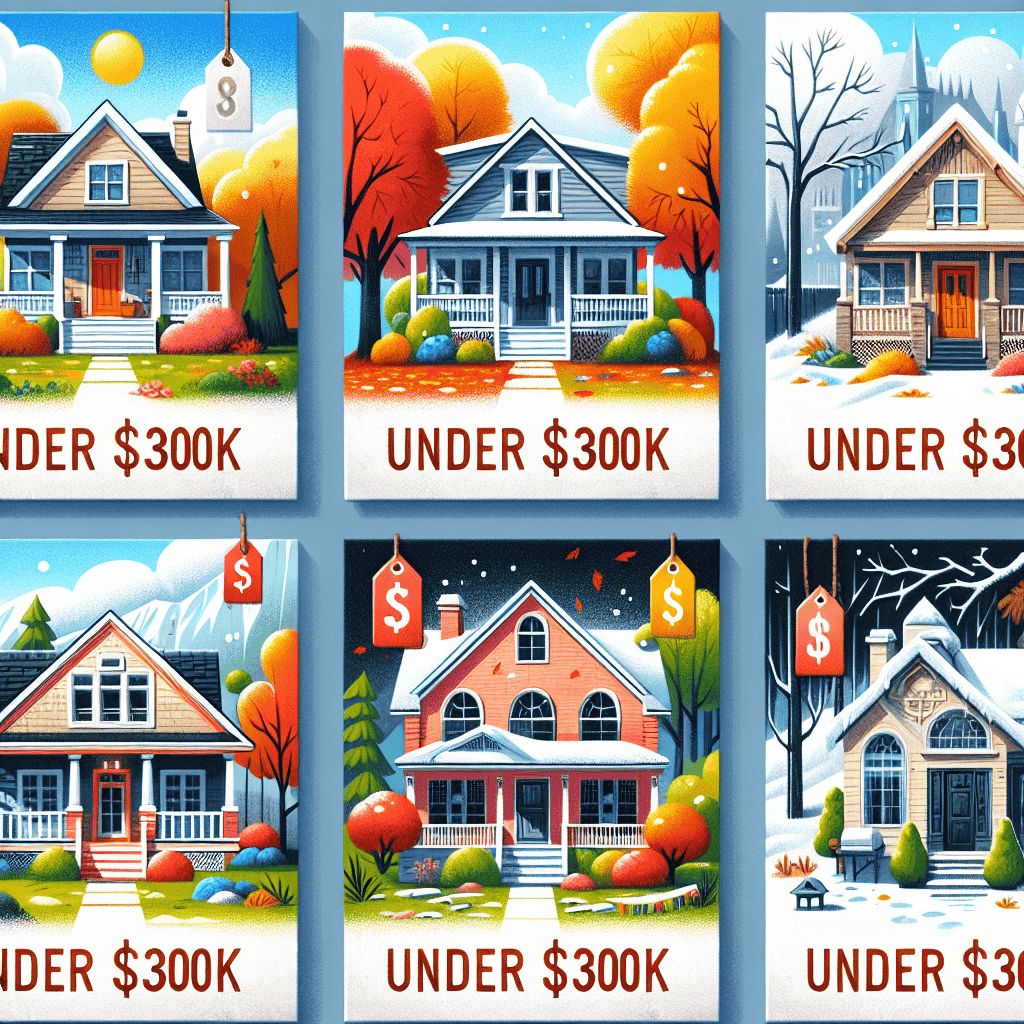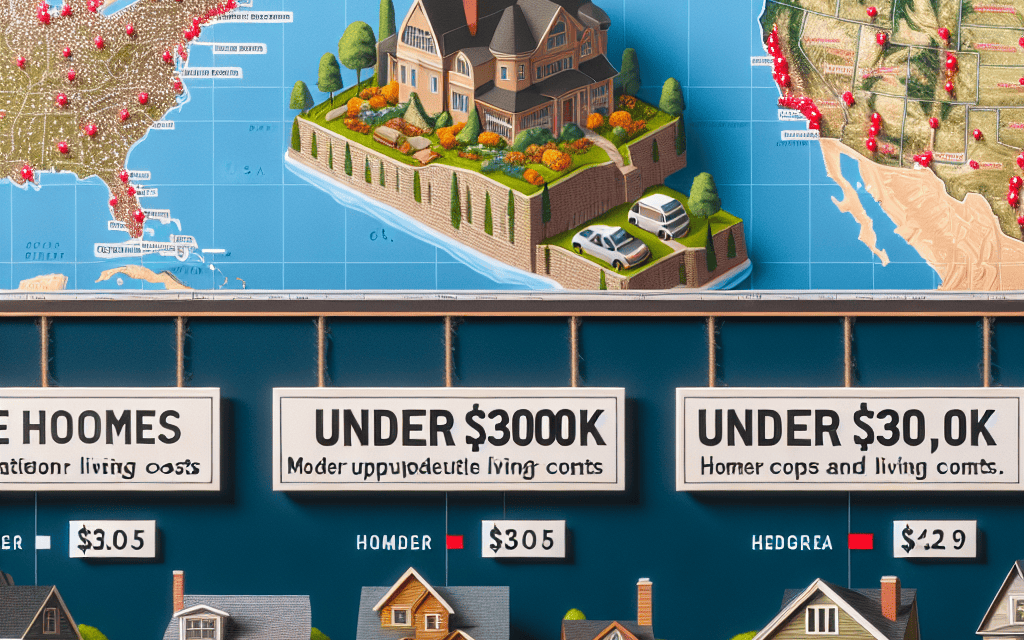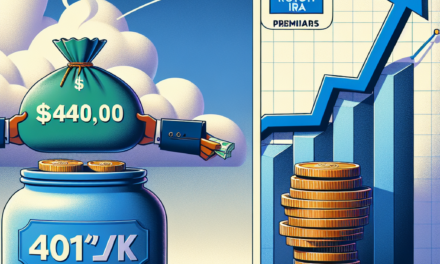“Discover Affordable Living: Explore 5 U.S. Cities with Homes Under $300K!”
Introduction
In an era where housing prices continue to soar across the United States, finding affordable homes can be a daunting task for many prospective buyers. However, there are still pockets of opportunity where the dream of homeownership remains within reach. This article explores five U.S. cities where the real estate market offers homes priced under $300,000, providing a glimpse into regions that combine affordability with livability. These cities not only offer budget-friendly housing options but also boast vibrant communities, economic opportunities, and a quality of life that appeals to a diverse range of residents. Whether you’re a first-time homebuyer, a retiree looking to downsize, or simply seeking a change of scenery, these cities present compelling options for affordable living in today’s competitive housing market.
Exploring Affordable Housing Options in Pittsburgh: A Hidden Gem Under $300K
In the quest for affordable housing, Pittsburgh emerges as a hidden gem, offering a unique blend of urban amenities and small-town charm. As housing prices soar in many parts of the United States, Pittsburgh stands out as a city where homebuyers can still find properties under $300,000. This affordability, coupled with the city’s rich history, vibrant culture, and economic opportunities, makes it an attractive option for those seeking a new place to call home.
Pittsburgh’s housing market is characterized by its diverse range of neighborhoods, each offering distinct features and benefits. From the historic charm of the North Side to the bustling energy of the South Side, potential homeowners can find a variety of options that suit their preferences and lifestyles. The city’s commitment to preserving its architectural heritage is evident in the well-maintained Victorian homes and classic row houses that dot its landscape. These properties not only offer affordability but also a sense of character and history that is often lacking in newer developments.
Moreover, Pittsburgh’s economic landscape is undergoing a transformation, driven by a burgeoning tech industry and a strong healthcare sector. This economic revitalization has created a stable job market, attracting professionals from various fields. As a result, the demand for housing has increased, yet the city has managed to maintain its affordability. This balance between economic growth and housing accessibility is a testament to Pittsburgh’s strategic urban planning and commitment to sustainable development.
In addition to its economic appeal, Pittsburgh offers a high quality of life, with numerous cultural and recreational opportunities. The city’s vibrant arts scene, highlighted by institutions such as the Carnegie Museum of Art and the Pittsburgh Symphony Orchestra, provides residents with a rich cultural experience. Furthermore, Pittsburgh’s extensive park system and proximity to natural attractions like the Allegheny National Forest offer ample opportunities for outdoor activities, making it an ideal location for nature enthusiasts.
Education is another factor that contributes to Pittsburgh’s appeal. The city is home to several renowned universities, including Carnegie Mellon University and the University of Pittsburgh, which not only provide educational opportunities but also contribute to the city’s dynamic and innovative atmosphere. This academic presence fosters a culture of learning and growth, attracting students and professionals alike.
Transportation in Pittsburgh is also a notable advantage, with a well-connected public transit system that makes commuting convenient and efficient. The city’s strategic location at the confluence of three rivers further enhances its accessibility, providing easy access to major highways and airports. This connectivity is particularly beneficial for those who travel frequently for work or leisure.
In conclusion, Pittsburgh’s combination of affordable housing, economic opportunities, cultural richness, and quality of life makes it a compelling choice for homebuyers seeking properties under $300,000. As the city continues to evolve and grow, it remains committed to maintaining its affordability and livability, ensuring that it remains an attractive destination for individuals and families alike. For those exploring affordable housing options, Pittsburgh stands out as a city that offers not only a place to live but a community to thrive in.
Discovering Budget-Friendly Homes in Indianapolis: A City of Opportunities
In the ever-evolving landscape of the U.S. real estate market, finding a home that is both affordable and situated in a thriving city can seem like a daunting task. However, Indianapolis, the capital city of Indiana, emerges as a beacon of hope for prospective homeowners seeking budget-friendly options. With its rich history, vibrant culture, and burgeoning economy, Indianapolis offers a unique blend of affordability and opportunity, making it an attractive destination for individuals and families alike.
To begin with, Indianapolis boasts a diverse housing market that caters to a wide range of preferences and budgets. Unlike many metropolitan areas where housing prices have skyrocketed, Indianapolis remains a city where homes under $300,000 are not only available but also abundant. This affordability is largely attributed to the city’s steady economic growth, which has not been accompanied by the rapid inflation of property values seen in other parts of the country. Consequently, potential homeowners can find a variety of housing options, from charming bungalows in historic neighborhoods to modern townhouses in newly developed areas.
Moreover, the city’s economic landscape plays a significant role in maintaining its housing affordability. Indianapolis is home to a robust job market, with key industries such as healthcare, manufacturing, and technology driving its economy. The presence of major employers, including Eli Lilly and Company, Cummins, and Salesforce, provides a stable employment environment, attracting a skilled workforce and fostering economic resilience. This economic stability, in turn, supports a balanced real estate market where housing prices remain accessible to a broad spectrum of buyers.
In addition to its economic advantages, Indianapolis offers a high quality of life that enhances its appeal as a place to call home. The city is renowned for its cultural and recreational amenities, which contribute to a vibrant community atmosphere. Residents can enjoy a plethora of activities, from exploring the Indianapolis Museum of Art and attending performances at the Indiana Repertory Theatre to cheering on the Indianapolis Colts and the Indiana Pacers. Furthermore, the city’s extensive park system, including the renowned White River State Park, provides ample opportunities for outdoor recreation and relaxation.
Transitioning to the educational landscape, Indianapolis is also home to a number of reputable educational institutions, making it an ideal location for families. The city boasts a range of public and private schools, as well as esteemed higher education institutions such as Indiana University-Purdue University Indianapolis (IUPUI) and Butler University. These educational opportunities not only enhance the city’s attractiveness to families but also contribute to the development of a well-educated workforce, further bolstering the local economy.
In conclusion, Indianapolis stands out as a city where affordable housing and a high quality of life intersect. Its combination of economic stability, cultural richness, and educational opportunities creates an environment where individuals and families can thrive without the burden of exorbitant housing costs. As the real estate market continues to evolve, Indianapolis remains a testament to the possibility of finding a home that is both affordable and situated in a city of opportunities. For those seeking a budget-friendly home under $300,000, Indianapolis offers a promising and welcoming destination.
Affordable Living in Louisville: Finding Your Dream Home Under $300K
In the quest for affordable housing, Louisville, Kentucky, stands out as a beacon of opportunity for prospective homeowners seeking properties under $300,000. This vibrant city, known for its rich history and cultural diversity, offers a unique blend of urban amenities and suburban tranquility, making it an attractive destination for individuals and families alike. As housing prices continue to soar in many parts of the United States, Louisville remains a city where affordability and quality of life intersect harmoniously.
One of the key factors contributing to Louisville’s affordability is its diverse housing market. The city boasts a wide range of housing options, from charming historic homes in established neighborhoods to modern developments in burgeoning areas. This variety ensures that potential buyers can find a home that suits their preferences and budget. Moreover, Louisville’s real estate market has remained relatively stable, avoiding the dramatic price surges seen in other metropolitan areas. This stability provides a sense of security for buyers, knowing that their investment is less likely to be subject to volatile market fluctuations.
In addition to its affordable housing market, Louisville offers a cost of living that is significantly lower than the national average. This economic advantage extends beyond housing, encompassing everyday expenses such as groceries, transportation, and healthcare. As a result, residents can enjoy a comfortable lifestyle without the financial strain experienced in more expensive cities. Furthermore, Louisville’s robust job market, driven by industries such as healthcare, manufacturing, and logistics, provides ample employment opportunities, contributing to the city’s overall economic vitality.
Transitioning from economic factors to lifestyle considerations, Louisville is a city that prides itself on its rich cultural heritage and vibrant community life. The city’s diverse population is reflected in its array of cultural festivals, culinary offerings, and artistic endeavors. From the world-renowned Kentucky Derby to the eclectic NuLu district, Louisville offers a plethora of activities and attractions that cater to a wide range of interests. This cultural richness enhances the quality of life for residents, providing them with a sense of belonging and community engagement.
Moreover, Louisville’s commitment to green spaces and outdoor recreation further enhances its appeal. The city is home to an extensive park system, including the expansive Cherokee Park and the scenic Waterfront Park, which offer residents ample opportunities for outdoor activities such as hiking, biking, and picnicking. These natural amenities not only promote a healthy lifestyle but also contribute to the city’s overall livability.
In conclusion, Louisville, Kentucky, emerges as a prime example of a city where affordable housing and a high quality of life coexist. Its stable real estate market, low cost of living, and vibrant cultural scene make it an attractive option for those seeking a home under $300,000. As housing affordability becomes an increasingly pressing issue across the nation, Louisville stands out as a city that offers both economic advantages and a fulfilling lifestyle. For individuals and families looking to plant roots in a community that values both tradition and innovation, Louisville presents an opportunity to find their dream home without compromising on quality or affordability.
The Charm of Buffalo: Affordable Homes and Vibrant Communities

Buffalo, New York, often overshadowed by its larger neighbor, New York City, is gaining recognition for its affordable housing market and vibrant communities. As housing prices soar in many parts of the United States, Buffalo stands out as a city where homeownership remains attainable, with many properties available for under $300,000. This affordability, coupled with the city’s rich cultural tapestry and revitalized neighborhoods, makes Buffalo an attractive option for prospective homeowners seeking both value and community.
One of the key factors contributing to Buffalo’s affordability is its historical housing stock. The city boasts a wealth of architectural styles, from charming Victorian homes to sturdy brick bungalows, many of which are priced well within the reach of middle-class buyers. These homes not only offer character and history but also provide an opportunity for buyers to invest in properties with potential for appreciation as the city continues to grow and develop.
Moreover, Buffalo’s commitment to revitalization has played a significant role in enhancing its appeal. Over the past decade, the city has invested heavily in infrastructure improvements, public spaces, and community initiatives. The revitalization of the waterfront, for instance, has transformed the area into a bustling hub of activity, attracting both locals and tourists alike. This development has spurred economic growth, creating jobs and boosting the local economy, which in turn supports the housing market.
In addition to its economic advantages, Buffalo offers a vibrant cultural scene that enriches the lives of its residents. The city is home to a diverse array of cultural institutions, including the renowned Albright-Knox Art Gallery and the historic Shea’s Performing Arts Center. These venues, along with numerous festivals and events throughout the year, provide ample opportunities for residents to engage with the arts and connect with their community.
Education is another area where Buffalo shines, with several reputable institutions contributing to the city’s intellectual and cultural vibrancy. The presence of the University at Buffalo, a major research university, not only attracts students from around the world but also fosters innovation and collaboration within the community. This academic influence permeates the city, enhancing its reputation as a center for learning and discovery.
Furthermore, Buffalo’s sense of community is palpable, with residents taking pride in their neighborhoods and actively participating in local initiatives. This strong community spirit is evident in the numerous neighborhood associations and community groups that work tirelessly to improve the quality of life for all residents. Whether it’s organizing block parties, supporting local businesses, or advocating for neighborhood improvements, Buffalonians are deeply invested in the well-being of their city.
In conclusion, Buffalo’s combination of affordable housing, economic revitalization, cultural richness, educational opportunities, and strong community ties make it an appealing destination for those seeking a high quality of life without the prohibitive cost. As more people discover the charm and potential of this city, Buffalo is poised to continue its trajectory of growth and development, offering a promising future for both current and prospective residents. For those in search of a place where they can afford to put down roots and thrive, Buffalo stands out as a city that truly delivers on its promise of affordability and community.
Uncovering Affordable Housing in Oklahoma City: A Budget-Friendly Haven
In the quest for affordable housing, Oklahoma City emerges as a beacon of hope for prospective homeowners seeking budget-friendly options. As housing prices continue to soar in many parts of the United States, Oklahoma City stands out as a city where homes remain accessible, with many properties available for under $300,000. This affordability is not only a testament to the city’s economic stability but also a reflection of its commitment to providing a high quality of life for its residents.
Oklahoma City’s housing market is characterized by a diverse range of properties, from charming historic homes to modern new builds, all within a price range that is increasingly rare in today’s real estate landscape. The city’s affordability is largely driven by its steady economic growth, which has been bolstered by a robust job market and a low cost of living. These factors combine to create an environment where homeownership is not just a dream but a tangible reality for many.
Moreover, Oklahoma City’s appeal extends beyond its affordable housing market. The city boasts a rich cultural scene, with numerous museums, theaters, and galleries that cater to a wide array of interests. Additionally, the city’s commitment to green spaces and outdoor activities is evident in its extensive park system and numerous recreational opportunities. This blend of cultural and recreational amenities enhances the overall quality of life, making Oklahoma City an attractive destination for families, young professionals, and retirees alike.
Transitioning to the economic aspects, Oklahoma City’s job market is another significant factor contributing to its affordability. The city has seen consistent job growth across various sectors, including energy, healthcare, and technology. This economic diversity not only provides stability but also attracts a skilled workforce, further driving demand for housing. As a result, the city’s real estate market remains vibrant, with a steady influx of new residents seeking affordable living options.
Furthermore, Oklahoma City’s strategic location in the heart of the United States makes it a logistical hub, facilitating trade and commerce. This central positioning has attracted numerous businesses, contributing to the city’s economic resilience and, by extension, its affordable housing market. The city’s infrastructure, including its well-connected transportation network, supports this economic activity, making it an ideal place for businesses and residents alike.
In addition to its economic advantages, Oklahoma City is known for its strong sense of community and welcoming atmosphere. The city’s residents take pride in their community, fostering a sense of belonging and mutual support. This community spirit is reflected in the numerous local events and festivals that bring people together, further enhancing the city’s appeal as a place to call home.
In conclusion, Oklahoma City stands out as a prime example of a U.S. city where homes remain affordable under $300,000. Its combination of economic stability, cultural richness, and community spirit creates an environment where residents can thrive. As housing affordability continues to be a pressing issue nationwide, Oklahoma City offers a compelling case for those seeking a balance between cost and quality of life. With its diverse housing options, vibrant job market, and welcoming community, Oklahoma City is not just a place to live but a place to truly belong.
Affordable Housing in Memphis: Southern Comfort on a Budget
In the quest for affordable housing, Memphis, Tennessee, emerges as a beacon of hope for prospective homeowners seeking comfort without breaking the bank. Nestled along the Mississippi River, Memphis offers a unique blend of cultural richness, historical significance, and economic opportunity, making it an attractive destination for those looking to invest in real estate. With a median home price comfortably under $300,000, Memphis stands out as a city where affordability meets quality of life.
One of the key factors contributing to Memphis’s affordability is its diverse housing market. The city boasts a wide range of housing options, from charming historic homes in neighborhoods like Cooper-Young to modern developments in areas such as East Memphis. This variety ensures that potential buyers can find a home that suits their preferences and budget. Moreover, the cost of living in Memphis is significantly lower than the national average, which further enhances its appeal as a cost-effective place to settle down.
In addition to its affordable housing market, Memphis offers a robust job market that attracts individuals from various professional backgrounds. The city is home to several major employers, including FedEx, International Paper, and St. Jude Children’s Research Hospital, providing ample employment opportunities. This economic stability not only supports the local housing market but also contributes to the overall quality of life for residents. Furthermore, Memphis’s strategic location as a transportation hub enhances its economic prospects, making it an ideal place for businesses and individuals alike.
Cultural and recreational amenities also play a significant role in Memphis’s allure. The city is renowned for its vibrant music scene, being the birthplace of blues and a pivotal location in the history of rock ‘n’ roll. Residents and visitors can explore iconic sites such as Beale Street and the Stax Museum of American Soul Music, immersing themselves in the rich musical heritage that defines the city. Additionally, Memphis offers a variety of outdoor activities, with numerous parks and the scenic Mississippi Riverfront providing ample opportunities for recreation and relaxation.
Education is another critical aspect that enhances Memphis’s attractiveness as a place to live. The city is home to several reputable educational institutions, including the University of Memphis and Rhodes College, which offer a range of academic programs and contribute to the city’s intellectual vibrancy. For families, the presence of quality public and private schools ensures that children receive a solid education, further adding to the city’s appeal as a family-friendly destination.
While Memphis offers numerous advantages, it is essential to acknowledge the challenges the city faces, such as crime rates and infrastructure issues. However, local government and community organizations are actively working to address these concerns, implementing initiatives aimed at improving safety and enhancing the quality of life for residents. These efforts demonstrate a commitment to fostering a thriving and secure environment for all who call Memphis home.
In conclusion, Memphis stands out as a city where affordable housing is not just a possibility but a reality. With its diverse housing market, strong job opportunities, rich cultural scene, and educational resources, Memphis offers a compelling package for those seeking a high quality of life at an affordable price. As the city continues to grow and evolve, it remains a testament to the idea that comfort and affordability can coexist harmoniously in the heart of the American South.
Finding Your Home in Kansas City: Affordable Living Under $300K
Kansas City, a vibrant metropolis straddling the border between Missouri and Kansas, offers a unique blend of cultural richness and economic opportunity. Known for its jazz heritage, barbecue cuisine, and fountains, Kansas City is also gaining recognition for its affordable housing market. In a time when many U.S. cities are experiencing skyrocketing real estate prices, Kansas City stands out as a beacon of affordability, particularly for those seeking homes under $300,000. This affordability is not just a fleeting trend but a consistent feature of the city’s housing market, making it an attractive destination for first-time homebuyers and those looking to relocate.
One of the key factors contributing to Kansas City’s affordability is its steady economic growth, which has not been accompanied by the rapid housing price inflation seen in other metropolitan areas. The city’s economy is diverse, with strong sectors in healthcare, education, and manufacturing, providing a stable job market that supports a reasonable cost of living. Moreover, Kansas City’s central location in the United States makes it a logistical hub, further bolstering its economic resilience. This economic stability, coupled with a relatively low cost of living, creates an environment where homeownership is attainable for many.
In addition to economic factors, Kansas City’s housing market benefits from a balanced supply and demand dynamic. Unlike cities where demand far outstrips supply, leading to bidding wars and inflated prices, Kansas City maintains a healthy inventory of homes. This balance ensures that buyers have options and can find properties that fit their budget without compromising on quality or location. Neighborhoods such as Waldo, Brookside, and the Northland offer a range of housing styles, from charming bungalows to modern townhouses, all within the $300,000 price range.
Furthermore, Kansas City’s commitment to community development and urban revitalization has played a significant role in maintaining affordable housing. Initiatives aimed at improving infrastructure, enhancing public transportation, and fostering local businesses have revitalized many areas, making them desirable places to live without driving up property prices excessively. These efforts have not only improved the quality of life for residents but have also preserved the affordability that makes Kansas City appealing to homebuyers.
Another aspect that enhances Kansas City’s attractiveness is its rich cultural scene and recreational opportunities. The city boasts a plethora of museums, theaters, and music venues, offering residents a vibrant cultural life. Additionally, Kansas City’s numerous parks and outdoor spaces provide ample opportunities for recreation and relaxation, contributing to a high quality of life. This combination of cultural and recreational amenities, along with affordable housing, makes Kansas City a compelling choice for those seeking a balanced lifestyle.
In conclusion, Kansas City’s housing market presents a rare opportunity in today’s real estate landscape: the chance to own a home in a thriving city without breaking the bank. Its economic stability, balanced housing supply, and commitment to community development ensure that homes remain affordable, particularly for those with a budget under $300,000. Coupled with a rich cultural scene and abundant recreational options, Kansas City offers a quality of life that is both fulfilling and financially accessible. As more people discover the benefits of living in this dynamic city, Kansas City is poised to remain a top choice for affordable homeownership in the United States.
Q&A
1. **Question:** What is one U.S. city where homes remain affordable under $300K?
**Answer:** Pittsburgh, Pennsylvania.
2. **Question:** Which city in Texas is known for having homes under $300K?
**Answer:** San Antonio, Texas.
3. **Question:** Name a city in the Midwest where housing is affordable under $300K.
**Answer:** Indianapolis, Indiana.
4. **Question:** Which city in the Southeast offers homes under $300K?
**Answer:** Birmingham, Alabama.
5. **Question:** Identify a city in Ohio with affordable housing under $300K.
**Answer:** Columbus, Ohio.
6. **Question:** What factors contribute to homes being affordable in these cities?
**Answer:** Factors include lower cost of living, availability of land, and local economic conditions.
7. **Question:** Are these cities experiencing population growth despite affordable housing?
**Answer:** Yes, many of these cities are experiencing population growth due to their affordability and economic opportunities.
Conclusion
In conclusion, despite the rising costs of real estate across the United States, there are still cities where homebuyers can find affordable housing options under $300,000. These cities often offer a combination of economic opportunities, quality of life, and community amenities that make them attractive to potential homeowners. Factors such as local job markets, cost of living, and regional economic conditions play a significant role in maintaining these affordable housing markets. As housing affordability continues to be a critical issue nationwide, these cities provide viable options for individuals and families seeking to purchase homes without exceeding their budgets.





